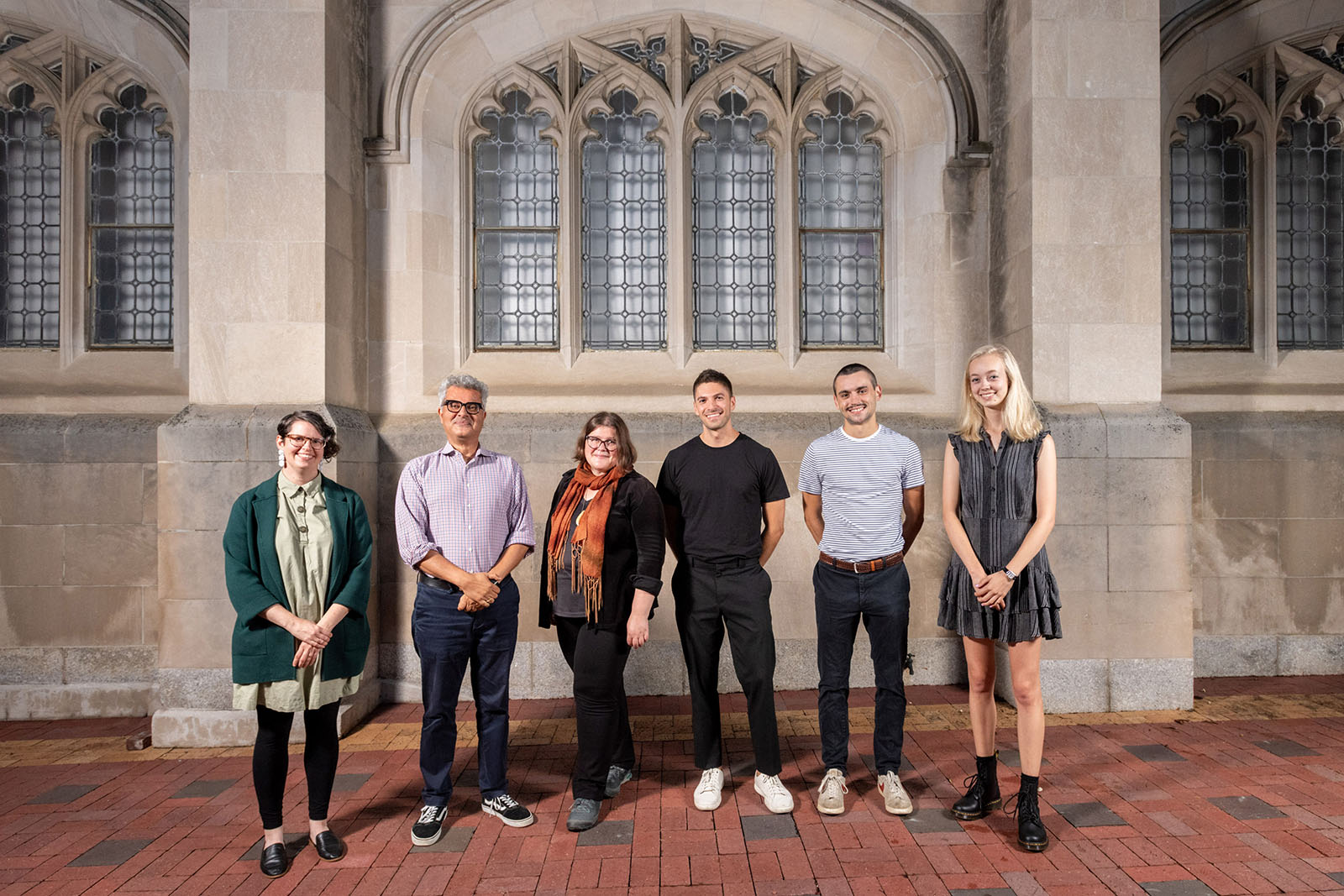Panelists Debate the Ethics of News Photography
Two days before the 20th anniversary of the 9/11 terrorist attacks, a top editor from the Wall Street Journal traded observations with student journalists and media experts about the evolving ethics of news photography at a forum at the Frances Lehman Loeb Art Center.
Panelists at the event, attended by more than 100 students, included Rich Bellis ’10, Senior Publishing Editor at the Wall Street Journal; Amitava Kumar, Vassar Professor of English, Urban Studies, and Media Studies and a published author and journalist; Nadia Sablin, documentary photographer and Professor of Photography at the State University of New York at New Paltz; Olivia Watson ’22, Editor in Chief of the Miscellany News, and Dean Kopitsky ’22, Managing Editor of the Miscellany News. Jessica Brier, Deknatel Curatorial Fellow in Photography at the Frances Lehman Loeb Art Center, served as moderator. The event was co-hosted by the Loeb and the Miscellany News.
Brier noted that the anniversary of 9/11 was “a poignant moment to reflect on the role of imagery in the collective experience and memory of that event, both personally and historically.” She said visitors to the Art Center who viewed a current exhibition of photos from 9/11 had experienced a wide range of emotions, “an important reminder that memory and history are shared but are also deeply personal.”
Bellis and others on the panel noted that journalists must straddle a fine line between presenting an accurate portrayal of an event while being mindful of not offending their audiences with images that may be viewed as gratuitous attempts to shock or entertain. He said achieving this balance is particularly challenging when choosing photos that accompany stories about war or other forms of violence. “Stories about war zones or the collapse of a condominium in Florida, you want to represent the story accurately and truthfully while still being conscious of the readers’ feelings,” he said.
Bellis added that editors don’t always achieve this balance. “There’s tension between the business side of the news—attracting readers—and reporting the news in a straightforward way,” he said, “and that balance is not always struck in an ethical way.”
Kumar opened his remarks by reciting a poem about images of a man who had jumped from the burning World Trade Center following the attack. During the discussion of the poem, Kopitsky noted that journalists who are choosing photographs for publication ought to ask themselves whether the people in the photos had asked to be photographed or whether they were caught in the frame without their knowledge. “I try to attach my empathy to the decisions I make,” he said.
Difficult decisions about what photos should accompany a story can occur anywhere and anytime, Watson said. She recalled the conversations she had with her fellow staffers at the Misc when the paper was working on a story about the infestation of mice in some residences on Vassar’s campus. The staff was considering running a photo of three baby mice found in a student’s shoe and debated whether the image might be viewed as sensationalistic. The editors decided to run the photo, “and in the end, I think it was the right decision,” Watson said. But she added that she had received emails from readers who disagreed with her choice.
Sablin noted that one study of news photography she had read had found that about 75 percent of all news photos on front pages depict catastrophes and said she wished editors did more to consider “what else is newsworthy.” She said she believed that the most impactful photographs about catastrophes aren’t images depicting violence itself but rather portraits of those who had been affected by a tragedy.
Kumar, whose latest novel centers on the phenomenon of “fake news,” said he was convinced that no one can ever achieve objectivity in reporting events or choosing a photograph. “I believe there is no such thing as absolute truth,” he said. “For me, the picture is mostly gray— there is very little black and very little white.”
Photo Currents: Media, Circulation, Spectacle, a small exhibition of photography drawn from the Loeb's permanent collection, looking at the 1960s/70s and 2001 as touch points in the recent history of photography's role in American media, will be on view until October 24.
Straight from the Source is an ongoing editorial series that offers a peek into Vassar’s diverse open curriculum and programs, which help shape and develop the critical thinkers, doers, and leaders of the future.
